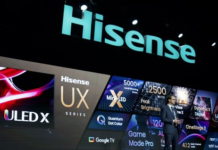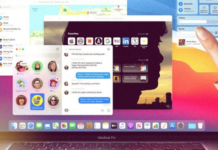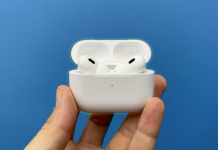It is easy to say that the Realme GT Neo 3T is a good mid/high-end Android smartphone for two reasons: first, because it is now rather difficult to find scarce ones; second, because it is basically a rebranded Realme GT Neo 2, net of some improvement all in all marginal, and we liked that smartphone. To really understand if it is advisable or not you have to look beyond the data sheet or the actual feedback in the field, and make more considerations about price and competition – which is nice crowded. But let’s go in order.
Realme GT Neo 3S
75.8 x 162.9 x 8.7 mm
6.62 inches – 2400×1080 px
Realme GT Neo 2
75.8 x 162.9 x 8.96 mm
6.62 inches – 2400×1080 px
Click here for the full comparison »
If you already know the Realme GT Neo 2 you can save yourself some time knowing that everything is the same, except for these details:
Fast charging: 80 W instead of 65 W
Main camera sensor: OmniVision OV64B instead of Sony IMX682. Both sensors are 64 MP, but the Omnivision could be seen as a slight downgrade because the IMX is a bit larger, 1/1.73″ versus 1/2″, and therefore the pixels are larger in size – 0.8 micrometers versus 0.7.
Heat dissipation system. Here is a stainless steel vapor chamber system, which with its area of 4,129 square mm is called the largest of any Realme smartphone.
Finishes. On the new model there are two particularly bright colors inspired by the world of racing, yellow and white, while black is more traditional.
Memory. On the new model there are only 8 GB of RAM, there is no option for the 12 GB.
Native OS. Here we start immediately from Android 12 / Realme UI 3.0, which in any case the Neo 2 has already received a few months ago.
DESIGN AND BUILD QUALITY
Aesthetically the smartphone is perfectly identical to the Neo 2 – both in terms of camera placement and other components, and materials. The smartphone has a plastic shell and frame and slightly rounded side edges. It’s a bit slippery at first but after a while it grips well. In the package there is a transparent bumper rather anonymous and – again – slippery, but if nothing else it fits perfectly.
The assembly is very precise and does not show any particular criticalities. It lacks an anti-water and dust certification, although I suspect that, as said several times by the “cousin” OnePlus, it is more a matter of costs and licenses, as evidenced by the gaskets on the trolley of the dual nano SIM. The physical buttons are well reachable thanks to the optimal positioning on the sides of the body (volume on the left and on / off on the right), even if the “click” when you press them is not always homogeneous. It is not a particularly pleasant feeling, it suggests a certain fragility over time.
The camera module is significantly thicker than the body and the two main lenses still protrude a little. The bumper could have been a little thicker and even out the back, but no, and so the device continues to “wobble” when resting on a flat surface.
DISPLAY
The display is one of the strong points of the device: it is not at the levels of the top of the range, but it is the trusted Samsung E4 OLED FHD+ with 120 Hz refresh that we have already seen in many other devices. Good overall brightness, although the ambient sensor turned out to be a bit lazy on a couple of occasions, and good viewing angles. The optical fingerprint scanner is positioned a little at the bottom, very close to the bottom edge of the screen, and for some it may therefore be a bit uncomfortable. The scanner is not foolproof, especially with wet fingers, but if nothing else it is quite quick. I have not personally tried the Neo 2, but it seems that the oleophobic treatment has also improved. I can at least say that it does not get dirty too quickly.
Thanks to the touch sampling rate of 360 Hz the touch is always detected with great precision and speed, so that gaming sessions are always satisfying. Moreover, the peak brightness of 1,300 nits guarantees good visibility even under the direct sun. Of course, like all AMOLEDs, the use of the Always-on Display is a pleasure thanks to the very deep blacks. In HDR, the smartphone is able to perfectly cover (100%) the DCI-P3 color space, so watching video content is also at the top – especially if the source supports the high frame rate. By the way, formality: the widevine DRM system is L1, so on platforms such as Netflix and Prime Video you can take advantage of the highest possible quality.
































